Warning: Undefined variable $k in /home/nginx/domains/wired2fishcom.bigscoots-staging.com/public/wp-content/themes/understrap-child-0.6.0/functions.php on line 984
Warning: Undefined variable $k in /home/nginx/domains/wired2fishcom.bigscoots-staging.com/public/wp-content/themes/understrap-child-0.6.0/functions.php on line 987
If you are going to be on the water regularly fishing, boating, kayaking, or even wading in current, having a good life jacket should be considered a necessity. Life jackets, life vests, personal floatation devices (PFD), or whatever you choose to call them, they are an import pieces of gear that every serious angler should own and keep up to par.
Here is a serious no-nonsense guide to not only choosing the best life jackets, but also how to wear them properly and maintain them so that they do their intended job when the time comes. So let’s take a look at choosing the best life jackets, and then let’s talk about the different kinds, different applications and how to maintain them to keep them in tip top shape.
How to Choose the Proper and Best Life Jacket
Selecting a life jacket can be a daunting task when visiting your favorite retail store to prepare for your next adventure on the water. Wearing a life jacket is the number one way to keep yourself safe around the water. The most important part of selecting a life jacket is finding one you’ll wear confidently and without hesitation.
When shopping for a life jacket ask yourself questions like the following:
- What is my desired recreational activity or intended life jacket use?
- What is the location of my water related activity?
- Is the life jacket comfortable?
- Does the life jacket fit correctly?
- What level of buoyancy do I need?
- What price point am I shopping for?
Honestly answering these questions will allow you to find the life jacket best suited for your needs. There are many different styles of life jackets such as: foam, dual flotation, inflatable (manual and automatic), hydrostatic inflatables, and belt packs. Each life jacket is designed with a specific range of activities in mind. For instance, an inherently buoyant foam life jacket has a broad range of uses like boating, fishing, kayaking, and tubing. On the other hand, a belt pack may be a great option for a paddle boarder, but not for an angler driving a bass boat.
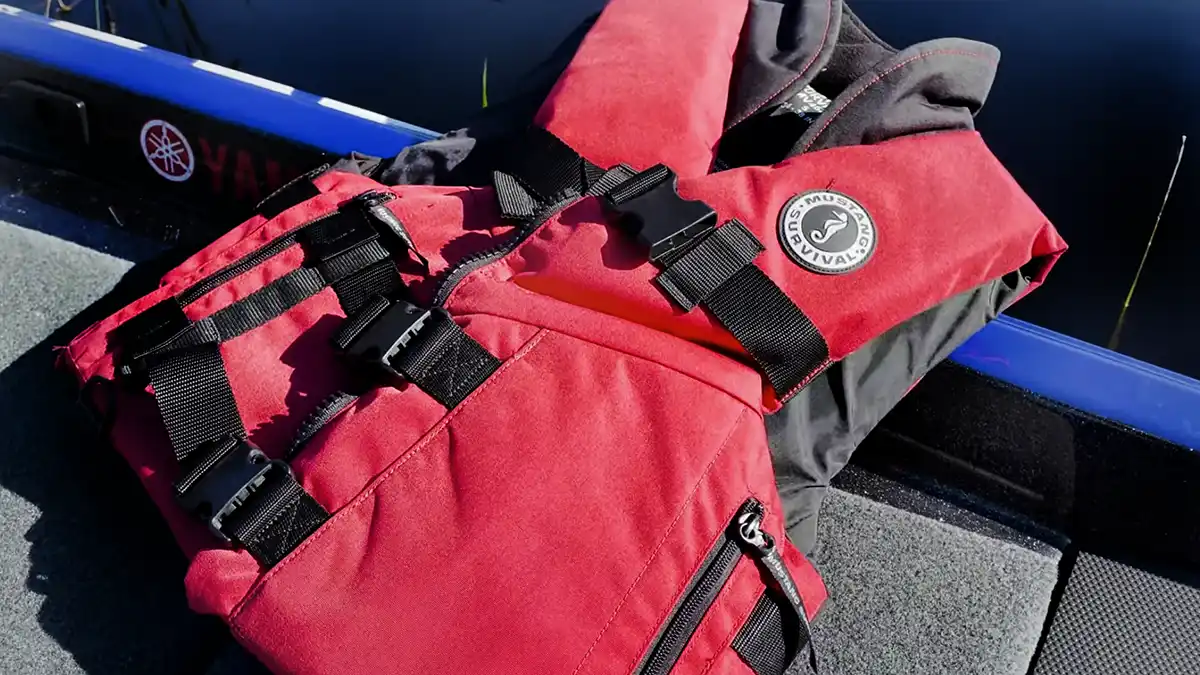
Adult Life Jackets
Most adults only need about 7-12 pounds of buoyancy to stay afloat and keep their heads above water. An adult selecting a life jacket should match the life jacket that meets their budget and desired water related activity. The key to selecting the right life jacket is finding one that is extremely comfortable, lightweight, and doesn’t limit your range of motion.
There are variety of life jackets on the market today. When selecting a life jacket think of it as selecting a new rod and reel setup. You have the choice to select a well-rounded option, or a more technique specific approach. For example, you can buy a good well-rounded combo that allows you to fish a variety of techniques – a foam life jacket. The other alternative is to shop based on a specific technique like crankbait fishing. This would be comparable to shopping for a life jacket specifically designed for the avid angler like a hydrostatic inflatable.
Keep in mind some of the intended uses of each like the following:
- Fishing – Foam, Automatic inflatable, or hydrostatic inflatable
- Kayaking – Dual flotation, Manual inflatable, belt pack, or foam
- Paddle boarding – Manual inflatable, dual flotation, or belt pack
Use these sample intended uses of each life vest to help you select a life jacket for your specific needs. Below are a few of my top life jacket choices.
Author’s Recommendation for Life Jackets include the following:
- Top Inflatable: Mustang Survival Elite 28
- Budget Inflatable: Mustang Survival MIT 70 Automatic
- Fishing Foam: Mustang Survival Accel 100
- Kayaking: Khimera Dual Flotation
Wired2fish also recommends the following:
- Onyx AM-24 All Clear – Buy at Bass Pro
- O Neill Reactor – Buy at Walmart
- NRS Chinook – Buy at Bass Pro
- Astral E-Ronny – Buy at Bass Pro
- Stearns Hybrid Fishing Paddling Life Jacket – Buy at Walmart
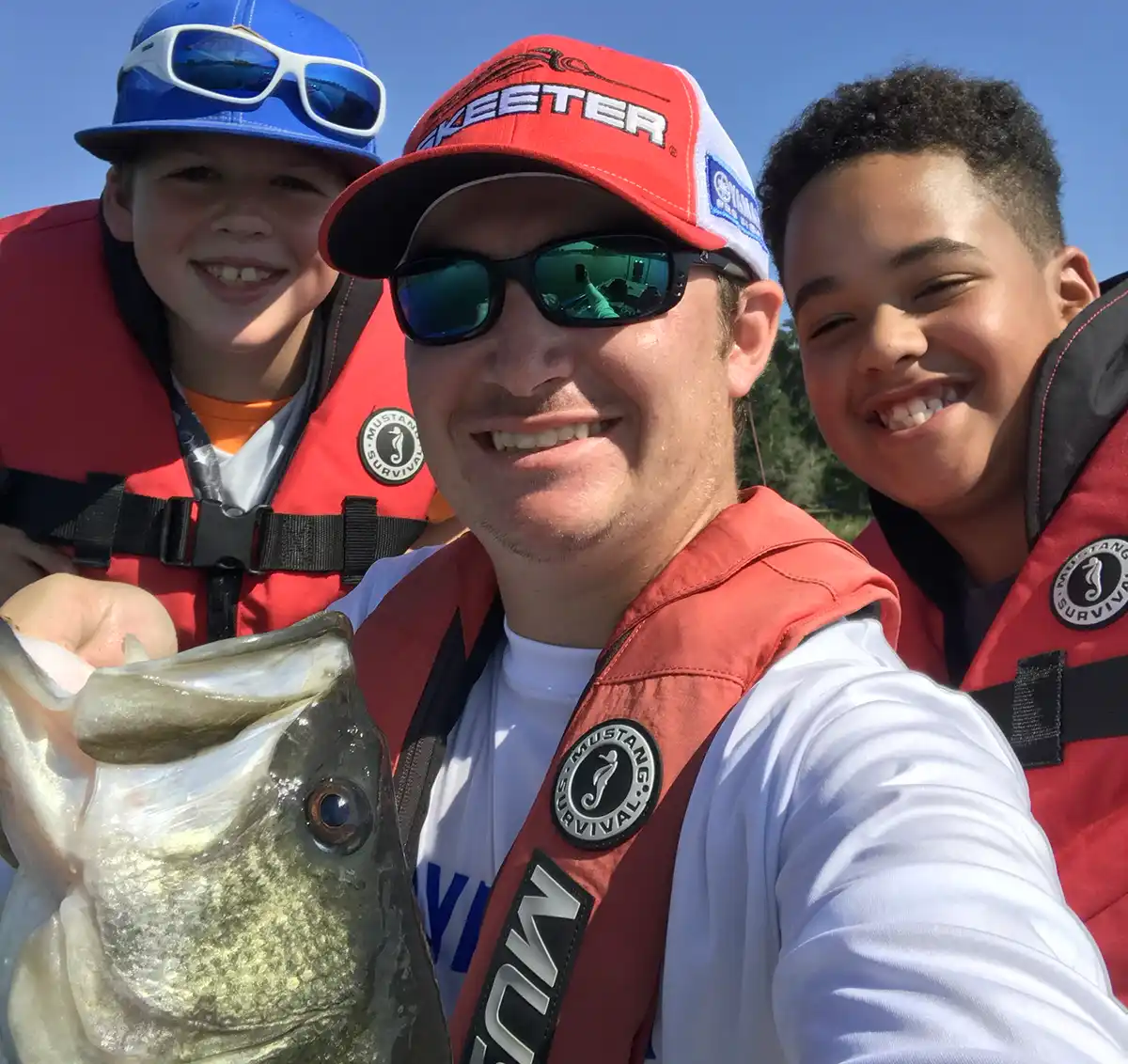
Kids Life Jackets
Although it can be difficult to get young children adjusted to the feeling of putting on a life jacket, it’s important that you select a life jacket that is sized properly. All children’s’ life jackets are sized based on body weight. The weight rating is located on the inside of the life jacket within the United States Coast Guard approval label. When purchasing a life jacket for a child – find one they feel comfortable in, are excited to wear, and one that doesn’t restrict their range of motion too much while maintaining a proper snug fit.
Depending on their age, look for added features like neck support and a grab handle for you to easily rescue them should they experience danger. Check your local rules and regulations for mandatory life jacket wear laws. I recommend always wearing a life jacket anytime you’re recreating on the water, especially young children. Create a positive environment for your children around wearing their life jacket. If possible, get them familiar with wearing it while attending activities like swim lessons. This will increase their overall water competency.
It’s important to note that the United States Coast Guard does not approve the use of inflatables for children under 16 years of age. Children under 16 should wear a comfortable properly fitting foam life jacket.
Best Budget Life Jackets
The main thing when selecting a life jacket is finding one that is comfortable and that you will confidently wear. Your safety should be a priority, but it doesn’t need to break the bank. If you are budgeting for a new life jacket the best affordable option is a good quality foam vest. Foam life jackets have very minimal upkeep and little to no maintenance. Foam life jackets are inherently buoyant which means no action is required to activate the flotation other than it being worn properly. Some models like the Mustang Accel 100 come with added features like a padded collar and zippered side pockets. I recommend not putting a price tag on your life but find the best possible option for your recreational activity in the price range you can afford.
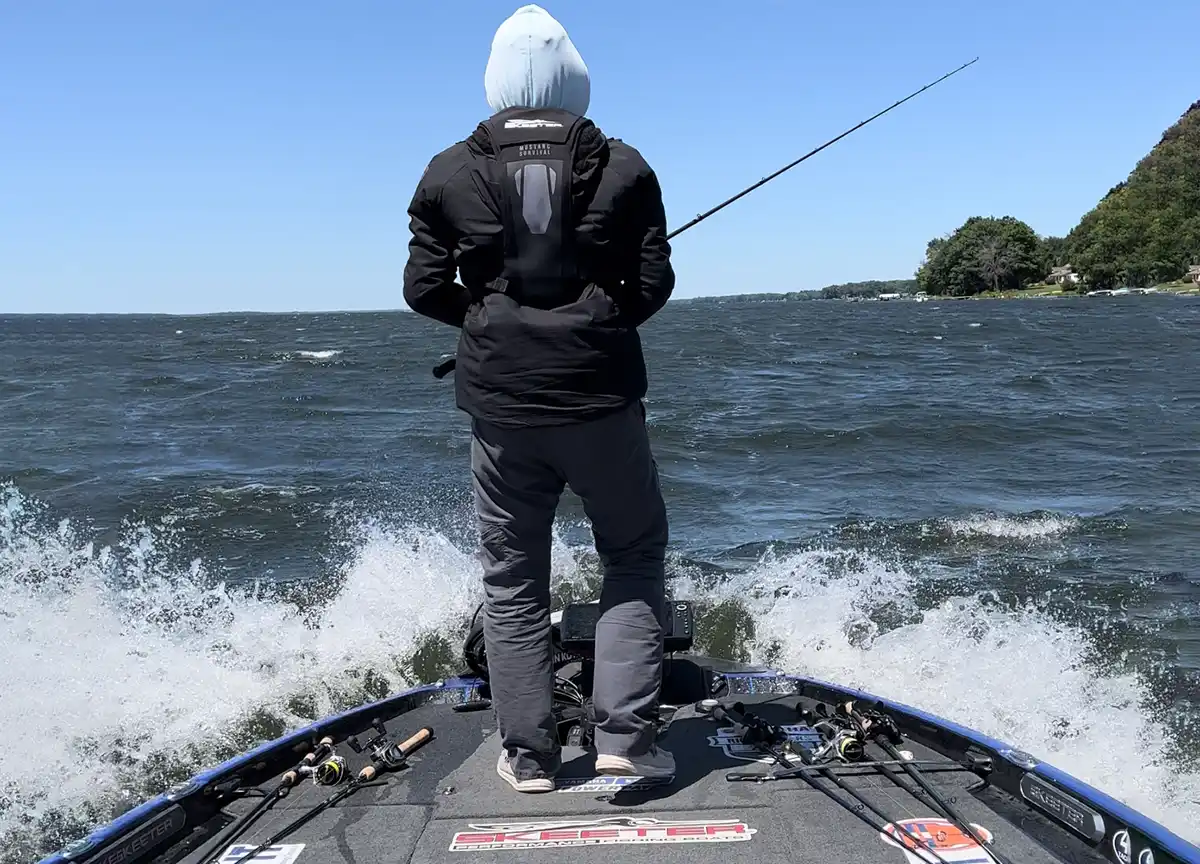
Best Inflatable PFDs
When selecting an inflatable life jacket consider the following:
- Inflation Type – Manual vs Automatic vs Hydrostatic
- Comfort
- Price
- Buoyancy Rating
- Maintenance – Which re-arming kit will I need?
There are multiple different types of inflatables on the market today which include: belt packs, manual, automatic, and hydrostatic inflatables. Understanding the different types of inflation would allow you to better choose a life jacket suitable for your activity. For example, if you’re running at high rates of speed in a boat it’s not recommended to use a manual life jacket. If you find yourself in the water and unconscious there is no way to inflate the life jacket. If you’re selecting an inflatable the best choice would be an automatic or hydrostatic inflatable. A hydrostatic inflatable is activated by water pressure. The difference in pressures from air to water activate the inflator inside the life jacket. It roughly takes about 3-4 inches of submersion in the water to inflate a hydrostatic inflatable. However, this type of inflatable vest can be worn in the pouring down rain or humid environments while receiving no unwanted inflations.
When selecting an inflatable, you want to match your activity with the desired buoyancy rating. If you’re an avid angler fishing from a boat, then 28 pounds of buoyancy may be a good option to cover you for a wide variety of locations and situations. If you’re a kayaker or paddle boarder, then a lower rated inflatable with 15 1/2 pounds of buoyancy would cover most situations you may encounter.
Please note – inflatables must be worn on the outside of all clothing. You should not wear any type of jacket or outer layer on top of your inflatable. This defeats the purpose of the inflatable option.
Author’s Recommendations
- Top Inflatable: Mustang Survival Elite 28
- Budget Inflatable: Mustang Survival MIT 70 Automatic
Wired2fish’s Additional Recommendations
Inflatable Vs Foam
There’s often a debate on which type of life jacket is the most suitable for you – foam vs inflatables. Often the debates are skewed due to lack of information on how each type of life jacket works. The fact is both an inflatable and foam life jacket WILL save your life when worn properly. A life jacket only serves it’s intended purpose when worn before you find yourself in the water. See the table below that compares foam life jackets vs inflatables.
|
LIFE JACKET COMPARISON – FOAM VS INFLATABLE |
||
|
|
LIFE JACKET TYPE | |
| SPECIFICATION | FOAM | INFLATABLE |
| Inflation Type |
Inherently Buoyant |
Manual, Automatic or Hydrostatic Inflation |
| Buoyancy Rating |
Medium (Approx. 15 lbs.) |
High (Approx. 22-38 lbs.) |
| Comfort |
Heavier and Bulkier |
Low Profile and Added Comfort |
| Maintenance |
General inspection |
Re-Armed after each inflation |
| Sizing |
S – XXXL |
One Size Fits Most |
| Price Point |
$ – $$ |
$$ – $$$ |
|
*Note: This is a general comparison of all available models. |
||
Kayak
It’s important to keep in mind your proximity to the water when selecting a life vest for kayaking. There’s the chance you may frequently have water splashed on you from paddling or enter the water on various occasions. An automatic inflatable option, when frequenting the water, would not be the best option due to having to purchase re-arm kits after every inflation.
If you find yourself entering the water while kayaking, and it’s a routine part of your excursion, you’d want to select a life jacket better suited for your needs like a kayaking specific foam life jacket, belt pack, or other options like the Khimera (buy here) dual flotation life jacket. Specific kayaking life jackets, like the dual flotation, combine an inherently buoyant life jacket with an additional manual inflatable built in. The manual inflatable is available to activate should you find yourself in a situation where you need a higher level of buoyancy.
Types of PFDs
- Type I PFDs — are generally used when fishing offshore, when boating alone, in stormy conditions, or when a rescue may take a while. These PFDs are a bit bulky, but also have great buoyancy and will keep most unconscious people face up out of the water. You will find this type of PFD on commercial boats.
- Type II PFDs — are usually less expensive and not as comfortable as a Type III. This type is not as bulky as a Type I and will turn some unconscious users to a face-up position in the water. This PFD does not perform very well in rough water and may require you to tread water in order to keep your head above water. Excellent to use in boating with smaller vessels.
- Type III PFDs — are a good choice for most kayak anglers as there is a better chance for a timely rescue. They are comfortable and allow more movement for several hours of wear. These PFDs can help the angler put themselves in a face-up position by tilting their head back so they are not face down in the water.
*Both the Type I, II, and III come in inherently buoyant, inflatable, or hybrid designs. - Type IV PFDs — are throwable devices for the conscious person having difficulty in the water and are a backup to a PFD. This could be a buoyant cushion, or a life ring. These are not meant to be worn and are not required for smaller vessels like the kayak.
- Type V PFDs — are specific devices that usually must be worn at all times to be approved. The label on the Type V PFD specifies the activity and may include kayaking, waterskiing, or windsurfing. This type of PFD comes in a hybrid or inflatable design. Some models feature a blow-tube to provide a back-up for inflation.
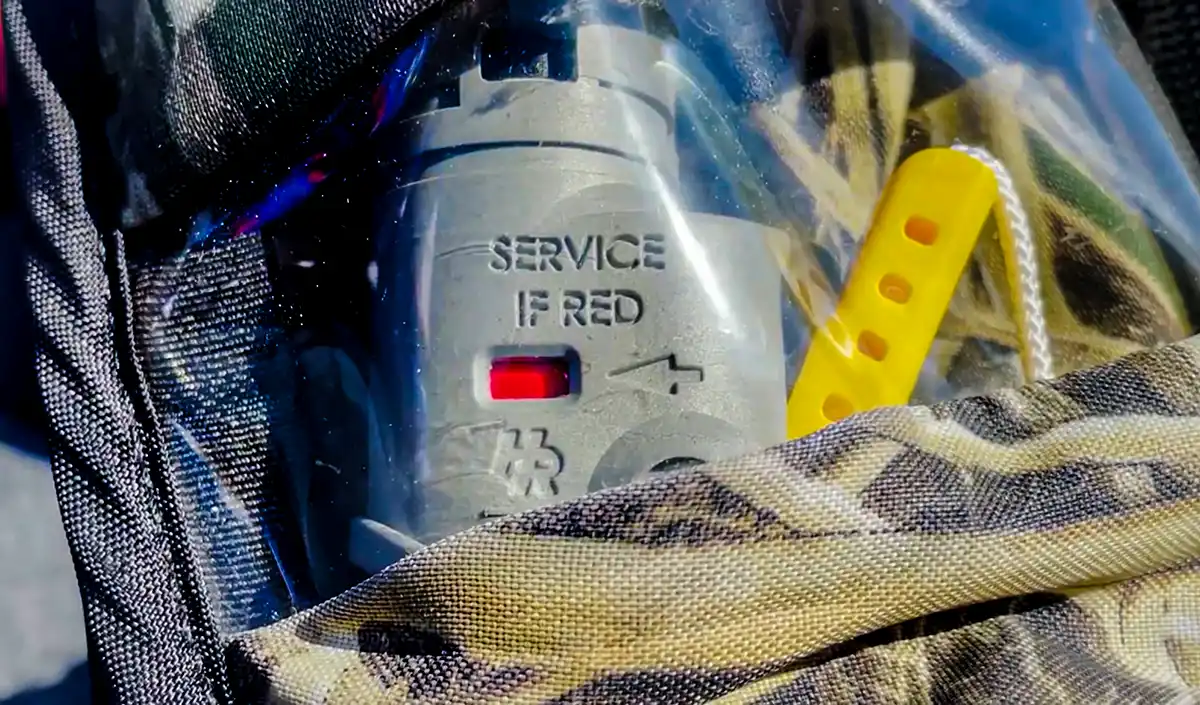
Maintaining Life Jackets
To increase the life expectancy of your life jackets store them in dry well vented places, do not leave them in direct sunlight for long periods of time. If they get saturated, make sure to dry them out before storing them. If your boat is in extended periods of storage, it’s recommended to remove your life jackets to prevent any unwanted mold or mildew impacting the durability of your product. Certain conditions like intense humidity can cause unwanted inflations on inflatables, so controlling your storage climate ensures longevity of the product.
With inflatable life jackets comes additional comfort, increased range of motion and higher levels of buoyancy. They also require greater responsibility and maintenance. It’s critical to always double check that your inflatable life jacket is properly armed before each use. Every inflatable has an indicator window to check the status of your life jacket. A “green” indicator symbolizes a properly armed inflator, and a “red” indicator symbolizes an inflator that is not armed properly. If you notice your life jacket is not armed properly, then you need to replace the internal inflator components using the correct re-arming kit, before using it. Inflatable life jackets will need to be rearmed after each inflation.
Replacing Life Jackets
Foam
The shelf life of foam is ultimately determined by the wear and tear the product receives from use. If you notice any damage to the fabric or foam after visually inspecting your foam life jacket, it’s time to replace that life vest to maintain the integrity of the product. On inherently buoyant life jackets, a life jacket where flotation does not need to be activated, it’s important to replace the unit when the flotation and structural integrity are impeded. Visibility in the water is also key if you were ever in a survival or rescue situation. If your life jacket becomes sun faded, replace it to maintain maximum visibility.
Inflatables
Inflatable life jackets require much more attention to detail. The internal inflation bladder and the outside shell of inflatable life jackets need to be inspected for wear and tear. If you notice any tears or damage to the inflation bladder than the unit needs to be replaced. The inflators have a shelf life of 3-5 years depending on the inflator type. Visually inspect your inflator to locate the expiration date. If you’ve reached the expiration date, make sure to purchase the correct re-arming kit before using the life jacket.
Each inflatable life jacket has a specific re-arming kit manufactured for that exact life jacket model. Consult the life jacket manufacturer’s website to find the re-arming kit you need. Often, they have a “Re-Arm Kit Finder” tab on their website to assist with your search. The correct re-arming kit is also stamped on the inside of the life jacket.
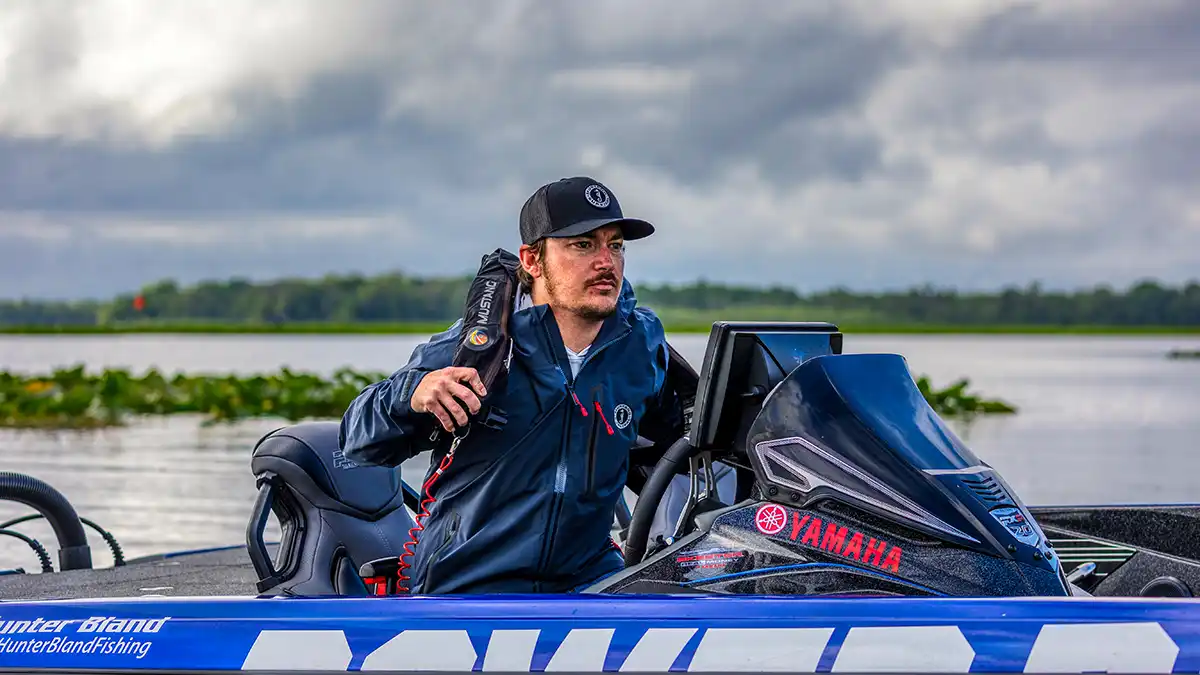
Resources for Personal Floatation and Safety
The National Safe Boating Council is a great resource to brush up on all things boating safety. The Wear It Campaign focuses on making an international effort to boat safely and emphasize the importance of wearing a life jacket.
There are all different “types” and classifications of life jackets. To learn more on each specific type of life jacket you can visit Mustang Survival’s classification page, or learn more from these great resources available through the United States Coast Guard.
Remember, the most important thing is finding a life jacket that is comfortable, makes you feel confident, and one that you will wear anytime you’re recreating on the water. A life jacket is only useful when worn, so be prepared for the unexpected – Wear It.
About the Author, Hunter Bland
Hunter Bland is a National Boating Safety Ambassador and a BASS Opens professional angler. He became well known as the driver in the University of Florida Bass Team boating accident on Jan. 14, 2017 after their video went viral. This accident, however, sparked his passion for safe boating and ultimately changed his life.
In 2019, Bland was awarded the National Boating Industry Safety Award in the category “Best Marine Marketing and Outreach”, through his boating advocacy work with Yamaha Outboards. He is a member of the Life Jacket Working Group that helped draft the first ever National Water Safety Action Plan for the United States.
Bland was recently appointed by Florida’s Governor Ron DeSantis to the Boating Advisory Council. He serves as an ambassador for the National Safe Boating Council and a member of the Waves of Hope family. His goal is to continue to make the waterways a safer place by sharing his story across the country, and ultimately positively change behavior to eliminate all water related tragedies.












